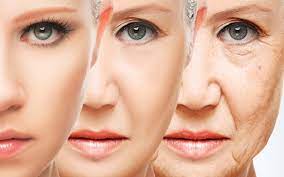Lactic acid effect on the skin
Lactic acid is a natural substance found in milk, yogurt, and sour cream. It's also produced in the human body during exercise. Lactic acid is an alpha-hydroxy acid that causes the skin to peel off in sheets. It can be used as a skin exfoliant or added to other products to help remove dead skin cells and reveal new skin cells underneath.
Lactic acid is a natural chemical found in sour milk. It can also be produced synthetically.
Lactic acid is used as a skin exfoliant to remove dry and dull skin and to help reduce the appearance of wrinkles and fine lines. Lactic acid can be found in many skincare products, such as cleansers, moisturizers, masks and peels.
The effects of lactic acid on skin depend on the concentration of lactic acid in the product. A higher concentration will cause more intense irritation than a lower concentration will.
Lactic acid is a natural chemical found in milk, yogurt, and sour cream. It is also produced by the human body during exercise. Lactic acid is an alpha hydroxy acid (AHA) that exfoliates skin by removing dead skin cells and improving the appearance of fine lines and wrinkles.
Lactic acid has been used for centuries to improve skin complexion. It has been used as a topical treatment for hyperpigmentation, acne, eczema, psoriasis, and other conditions.
The lactic acid effect on skin is to exfoliate the outermost layer of dead cells on the surface of your skin so that newer cells can take their place. This process can reduce signs of aging like wrinkles or age spots because it improves cell turnover rates.
Please always consult with your doctor!
As the owner of a Boutique Skin Clinic, Dr Shuba Dharmana is considered one of the top dermatologists in Bangalore.
Lejeune Medspa | Boutique Skin Clinic, Bangalore
Contact: +91 98451 04890







